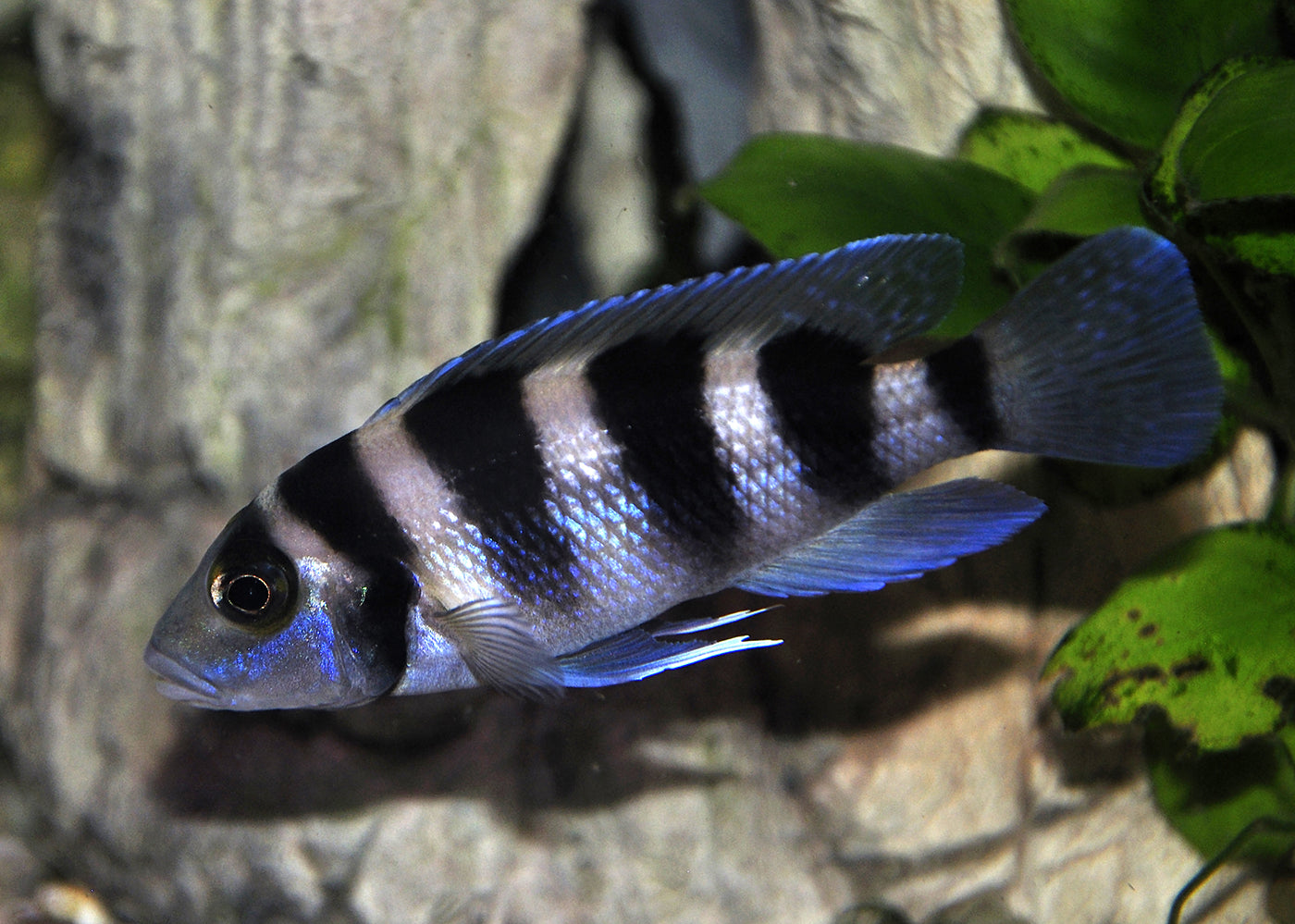Description
The Neolamprologus tretocephalus is a distinctive cichlid species native to Lake Tanganyika, prized for its bold markings and dynamic behaviour. This fish is well-regarded among aquarists for its striking appearance and relatively manageable temperament compared to other Tanganyikan cichlids.
Features of Neolamprologus tretocephalus
-
Grows up to 15 cm in length
-
Robust body with a pale base colour and striking dark vertical bands
-
Distinctive head shape with a slightly pointed snout
-
Moderately territorial and somewhat aggressive, especially during breeding
-
Hardy species adaptable to typical Lake Tanganyika water parameters
The Best Aquarium Size for Neolamprologus tretocephalus
A minimum tank size of 150 litres is recommended to provide ample space for territorial behaviour and swimming.
Tank Mate Compatibility for Neolamprologus tretocephalus
Compatible with other Lake Tanganyika species of similar size and temperament, including:
-
Julidochromis species
-
Neolamprologus brichardi
-
Altolamprologus calvus
-
Cyprichromis species
-
Lamprologus species
Avoid overly aggressive or much larger cichlids that may stress this species.
Diet for Neolamprologus tretocephalus
Carnivorous diet consisting of high-quality pellets or flakes supplemented with live or frozen foods such as brine shrimp, daphnia, and bloodworms.
Aquarium Setup for Neolamprologus tretocephalus
Aquarium Filtration
Strong biological and mechanical filtration is necessary to maintain pristine water conditions and high oxygen levels.
Aquarium Plants
Plants are generally not included in Tanganyika biotopes; however, hardy or artificial plants can be used with caution.
Aquarium Lighting
Moderate lighting to replicate natural conditions without causing stress.
Aquarium Heating
Maintain water temperatures between 24°C and 27°C for optimal health.
Aquarium Substrate
Use fine sand or small gravel to simulate the natural rocky and sandy substrate of their native habitat.
Aquarium Decorations
A rocky aquascape with plenty of caves and crevices supports natural territorial and breeding behaviours.

